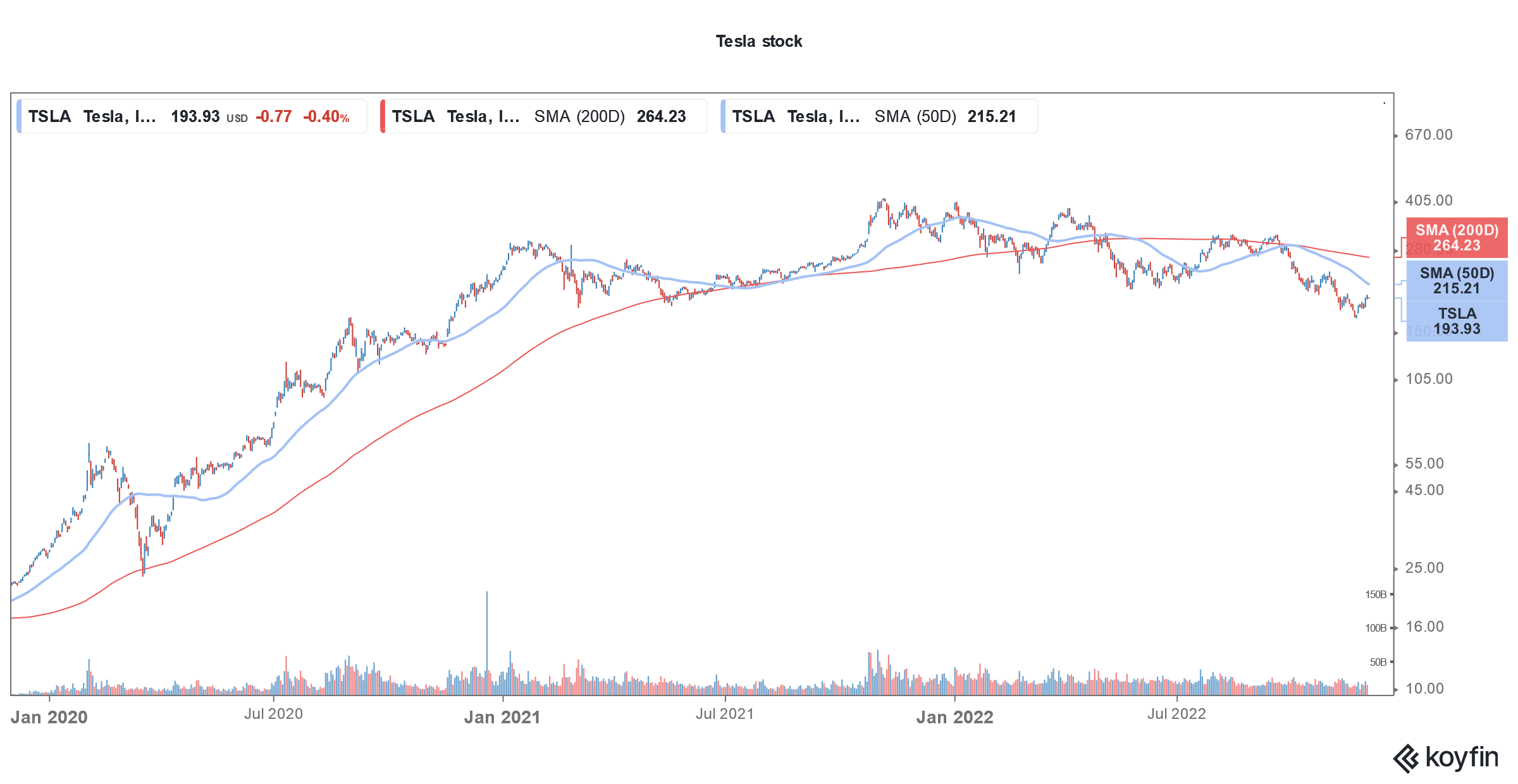Tesla Begins Semi Deliveries but Is It Facing a Slowdown in Demand?
Please note that we are not authorised to provide any investment advice. The content on this page is for information purposes only.
Tesla (NYSE: TSLA) finally begin the deliveries of its long-awaited Semi truck. The deliveries were initially scheduled to begin in 2019 but got delayed due to multiple reasons.
Semi is the first new model from Tesla since 2020 when it started delivering the Model Y crossover. The Model Y and Model 3 have helped Tesla achieve scale and together these two models account for the bulk of the company’s deliveries.
Talking of Semi, Musk introduced the concept in 2017 promising a 500-mile range. Notably, given the long distances that trucks travel, many companies like Volvo are also focusing on hydrogen-powered trucks. Musk meanwhile is not a fan of hydrogen fuel cell vehicles.
Tesla begins Semi deliveries
Nonetheless, the deliveries of Semi are a welcome move for Tesla as the company has now diversified beyond consumer vehicles. Next year, Tesla intends to begin the deliveries of its pickup model Cybertruck as well.
Like Semi, Cybertruck is also running behind schedule. Musk unveiled the rather unconventional model in late 2019. The model would compete with Ford’s F-150 Lightening. Ford began delivering the all-electric avatar of its best-selling F-150 pickup earlier this year only.
Rivian is also selling its R1T pickup and more recently Lordstown Motors started delivering its Endurance pickup. Endurance’s deliveries were also behind schedule. Lordstown Motors sold the Lordstown plant to Foxconn which now makes vehicles for it under contract manufacturing.
Foxconn is aggressively entering EV contract manufacturing and would also build the second model for Fisker. Foxconn has also formed a joint venture with Saudi Arabia to produce electric cars.
PepsiCo to take first deliveries of Semi
The initial deliveries of Semi would be to PepsiCo. While the two companies have not said how many Semi trucks would be delivered in 2022, Tesla chair Robyn Denholm said previously that the company could deliver around 100 this year.
Meanwhile, speaking at the occasion to mark the first Semi deliveries, Musk said, “If you’re a truck driver and you want the most badass rig on the road, this is it.” He also referred to the model as a “beast.”
Tesla stock meanwhile closed flat in yesterday’s price action and is trading on a flattish note in aftermarkets as well.
Is the demand for Tesla cars as strong as projected?
During Tesla’s Q3 2022 earnings call, the company said that its delivery growth in 2022 would be below 50%. Tesla has long been saying that its deliveries would rise at a CAGR of 50% over the long term.
During the earnings call, Musk said that there would be years when the growth would be below 50% but it would get offset by years when the growth surpasses 50%. It maintained its long-term delivery forecast of 50% CAGR growth.
During the Q3 earnings call, he said, “I can’t emphasize enough, we have excellent demand for Q4, and we expect to sell every car that we make for as far in the future as we can see. So, the factories are running at full speed, and we’re delivering a recovery make and keeping operating margins strong.”
He emphasized, “we’re very pedal to the metal come rain or shine. So, we are not reducing our production in any meaningful way, recession or not recession.”
Some analysts are cautious about the demand for Tesla cars
Bernstein analyst Toni Sacconaghi believes that Tesla is facing a slowdown in demand and cited the almost nil lead times in China. Notably, Tesla lowered car prices in China and also offered higher insurance incentives in November in order to spur sales.
Now, the company is also offering a $3,750 credit to US buyers who take a Model 3 or Model Y delivery in December. During the company’s Q3 2022 earnings call, Musk said that the fourth quarter would be an “epic.” Looking at the discounts, the company is looking to increase sales through incentives.
Notably, S&P Global Mobility said in its report that Tesla’s US market share fell from 71% in Q3 2021 to 65% in Q3 2022. It expects the company’s market share to drop further to 20% by 2025.
Twitter Acquisition a Hangover for TSLA stock
Musk acquired Twitter in October, post with Tesla stock has crashed. Musk already splits his time between Tesla, SpaceX, and some of the other companies that he owns. Markets fear that he would end up spending more time at Twitter when he should be spending his energies at Tesla.
Analysts find Tesla stock getting attractive after the sell-off
Tesla stock is down sharply from its 2021 highs and many analysts now find the risk-reward attractive. Citi, which had a sell rating on the stock, upgraded it to neutral. We believe the year-to-date pullback has balanced out the near-term risk/reward,” said Citi analyst Itay Michaeli in their note.”
Michaeli added, “To become bullish from here, we’d like to gain added confidence on the average sale price/auto gross margin bridge (including tracking near-term datapoints in China and Europe) and FSD (full self-driving) progress.”
TSLA has raised FSD prices in 2022
Notably, Musk sees FSD and other software services as a key driver for Tesla. The company was charging $10,000 for the FSD previously. At the beginning of 2022, it raised the prices to $12,000. It subsequently increased the price to $15,000 or $199 for monthly subscriptions.
Bernstein also sees the risk-reward balanced after the crash. Morgan Stanley, which is a long-time TSLA bull, also finds TSLA stock attractive after the sell-off even as it sees risks after Musk’s Twitter acquisition.
Musk meanwhile sees Tesla’s market cap rising way above these levels. During the Q3 2022 earnings call, he floated the idea of upto $10 billion stock buyback and predicted that Tesla’s market cap could surpass the combined market caps of Apple and Saudi Aramco, the world’s two largest companies in that order.






